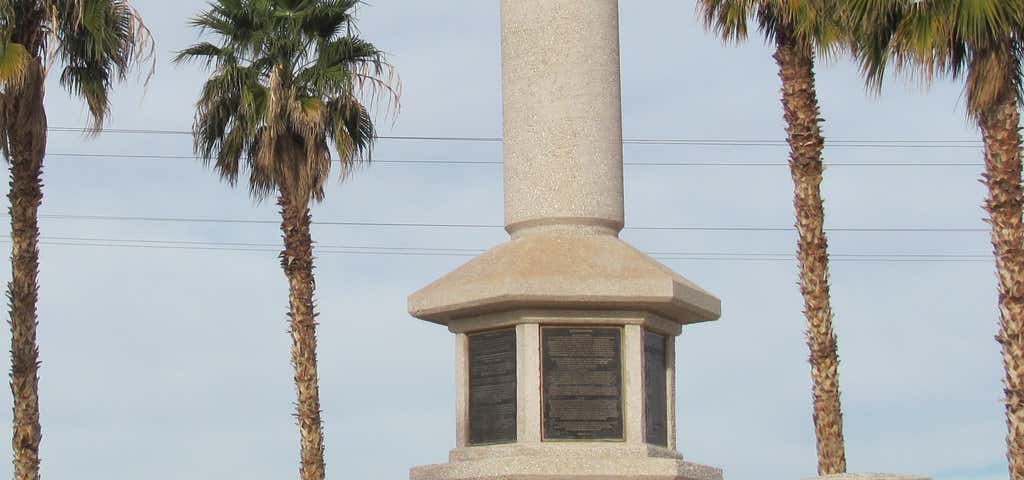“home of a ww2 internment camp”
The Poston War Relocation Center, located in Yuma County (now in La Paz County) of southwestern Arizona, was the largest (in terms of area) of the ten American internment camps operated by the War Relocation Authority during World War II. The Center was composed of three separate camps arranged in a chain from north to south at a distance of three miles from each other. Internees named the camps Roasten, Toastin, and Dustin, based on their desert locations. The Colorado River was approximately 3 miles (4.8 km) to the west, outside of the camp perimeter. Poston was built on the Colorado River Indian Reservation, over the objections of the Tribal Council, who refused to be a part of doing to others what had been done to their tribe. However, officials of the Bureau of Indian Affairs overrode the Council, seeing the opportunity to bring in improvements and develop agricultural land on the War Department budget and with thousands of "volunteers," which would remain after the war and aid the Reservation's permanent population. The combined peak population of the Poston camps was over 17,000, mostly from Southern California. At the time Poston was the third largest "city" in Arizona. It was built by Del Webb who would later become famous building Sun City, Arizona, and other retirement communities. The Poston facility was named after Charles Debrille Poston, a government engineer who planned an irrigation system to serve the needs of the Indian people along the Colorado River. A single fence surrounded all three camps, though Poston II and III did not have gatehouses. The thousands of internees and staff passed through the barbed-wire perimeter at Poston I, which was where the main administration center was located. Poston was a subject of a sociological research by Alexander H. Leighton, published in his 1945 book, The Governing of Men.
Actually located at 33.98769, -114.40118 off Mohave Road, not where the Roadtrippers icon is located on 10th Avenue.
The monument is located where the navigation says it is, now, so apparently that's been fixed: it's 4 miles south of Agnes Walker Road on the CRIT reservation. Well-maintained; and a pretty moving experience.
Be the first to add a review to the Japanese Internment Camp Monument.
/-114.40118,33.98769,14/300x172@2x?access_token=pk.eyJ1Ijoicm9hZHRyaXBwZXJzIiwiYSI6ImNsczF1Y3RwcTA0ZmgycHAwbngweHlmbDAifQ.G6RP_RvWmMx8yNQSHb3PGQ)
Japanese Internment Camp Monument
Hours
- Sun - Sat: 12:00 am - 11:59 pm
Problem with this listing? Let us know.
Has RV parking changed? Let us know.
-
Parking
-
Pets Allowed
-
Restrooms
-
Wifi
-
Wheelchair Accessible
-
Credit Cards Accepted
Parking
Nearby Hotels
Related Trip Guides
The Ultimate Guide To Joshua Tree National Park
- 53 Places
- 11:44
- 408 mi
The top things to do on an I-40 road trip
- 35 Places
- 49:44
- 2,851 mi
The top things to do on an I-10 road trip
- 55 Places
- 56:13
- 3,026 mi


